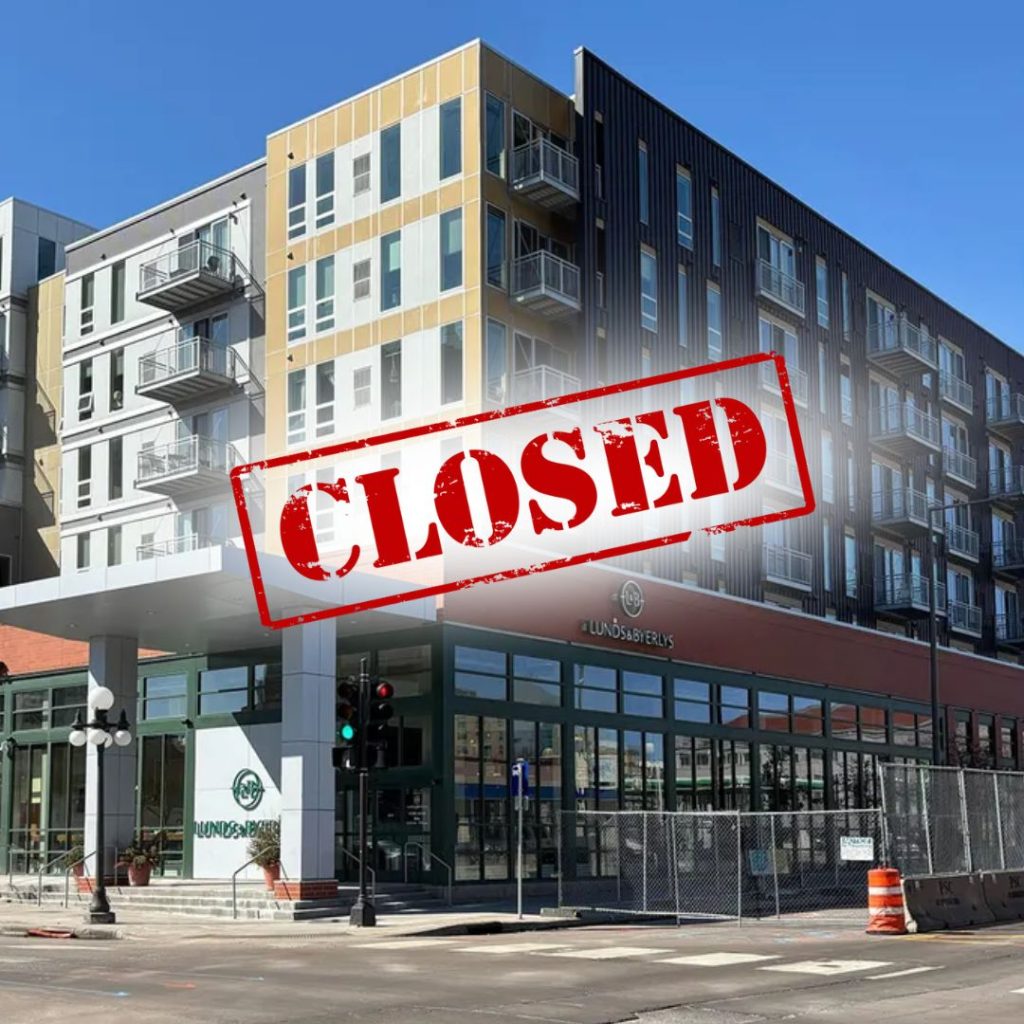In$ight St. Paul’s Executive Summary Report
In$ight St. Paul’s Executive Summary Report
![]()
Declining Tax Base
The St. Paul taxbase faces a high-stress fiscal environment, according to a report from a new concerned citizen organization, In$ight St. Paul. The report is based largely on extensive fact-finding embedded in research by five Minnesota governments.
“Growth of St. Paul’s tax base and population are lagging,” the report states. “Deferred maintenance of basic infrastructure, high and rising property and sales taxes and challenging crime and social issues create an environment that some residents and businesses want to leave. Reversing these trends requires a sense of urgency by all of St. Paul’s elected officials (Mayor & City Council, ISD 625 School Board and Ramsey Co. Commissioners).”


The report notes that the Minnesota Department of Revenue’s latest annual comparison of local property tax rates found that before adjusting for the state’s property tax refund, St. Paul’s effective property tax rate – 1.39% of estimated market value on a median value homestead – was the highest for all of Minnesota’s 20 regions. Property taxes are regressive and fall mostly on those on fixed incomes and lower income levels. This includes many thousands of apartment renters who must absorb the property tax increases that are being passed on to them through monthly rent payments.
St. Paul’s sales tax rate, 9.875%, is the highest of all cities in Minnesota.
Having the highest property tax and sales tax can discourage future private investment in St. Paul’s taxbase and will cause some residents and businesses to leave St. Paul.
Of Minnesota’s five largest cities, St. Paul was the only city to lose population from 2020 to 2023. And in 2024, two significant private employers downtown decided to leave the City.
In$ight St. Paul questioned whether the City of St. Paul would be able to maintain its coveted Triple-A bond rating from the Standard & Poor’s rating agency, given the City’s rising debt load. If S&P lowers its rating for our City, St. Paul property taxpayers will face even higher tax levies to meet higher interest rates for future debt (long-term bonds and shorter-term notes.) For this reason, In$ight St. Paul is recommending that a Joint- Overlapping Debt Policy be developed for the St. Paul taxbase, with a goal of reducing debt outstanding.
Meanwhile, a serious budget squeeze confronts St. Paul governments, even as the demand for local services increases. Revenues are coming under new pressure, while spending has been rising. A large source of special revenue – federal covid era aid – is drying up. Pending cuts in future federal and state aids will reduce revenues for City, Schools and County budgets and thus force reductions in some current services.
Steep declines in the value of downtown office buildings in 2024 have raised the likelihood of a plunge in property tax revenue from businesses, forcing higher 2025 taxes for other taxpayers. A panel of business and government leaders plans to study the financial condition of 20 structures downtown, with an eye toward converting them to housing or even tearing them down.


Increased Spending
In$ight St. Paul is concerned with the rate of increased spending in the budgets controlled by the Mayor and City Council. City staffing as measured by full-time equivalents was 2,924 positions in 2016 and rose to 3,209 positions for the proposed 2025 budget. This 285-position total increase in staffing was 9.7%. What was concerning is that 61 positions were reduced from the City’s Special Fund budgets and 347 positions were added to the City’s General Fund budget. This 17% increase in General Fund staffing had to be paid for with higher property tax levies. Two of the biggest staffing increases were for Parks and Recreation.
• Adding 87 FTEs to a staff of 642.
• Adding 36 FTEs to a staff 102 in the City Attorney’s Office.
No Budget for Streets, Sidewalks and Park Maintenance
Parks and Recreation is planning five new projects costing $13 million in design. Staff testimony at City budget meetings informed the City Council that Parks and Rec does not have enough money to maintain their existing facilities. In$ight St. Paul asks: “Why build five or more additional facilities that could easily add another couple of million dollars of annual operating costs to the already stressed Parks and Recreation budgets?”
The report noted that the City’s tax revenues have long been limited by its unusually large amount of services required for its tax-exempt property — 18.7% of its more than $43 billion in the value of all property. In suburban Ramsey County, the comparable share is 11.3%.


Problems with TIF
Also, In$ight St. Paul provided analysis about the important roles that two complex municipal financing tools – tax increment financing (TIF) and fiscal disparities – play in St. Paul. The City is the state’s biggest user of TIF, which St. Paul harnesses to attract economic development. Fiscal disparities is a Metropolitan Council program to redistribute business property taxes from the seven-county metro area’s wealthiest cities to less wealthy municipalities. St. Paul is metro area’s leading beneficiary of the fiscal disparities program.
The report urged St. Paul to disclose estimates of its TIF district levies. “We are disappointed that this secret levy is not disclosed in any summary,” the report said, adding that the City should also adopt the practice Minneapolis follows of annually disclosing data for each of its TIF districts. “The City of St. Paul should have the same transparency,” the report said. Those were two of the report’s dozen recommendations. Among the others:
- Establish a committee to advocate for more voluntary payments in lieu of property taxes from tax-exempt entities.
- Don’t approve Parks and Recreation design or construction funding this year or next for any facilities or park that doesn’t currently exist.
- Don’t approve sales tax bond issues until the City’s Office of Financial Services prepares a comprehensive bonding and debt service report.
In$ight St. Paul’s report includes a statement of principles and a glossary. We understand that revenue, spending and policy issues identified in this report go back long before the current City administration, but we depend on our elected officials to “right the ship” now and going forward.
Read and Download the Full Report
Infographics
- Summary or Finding
- 2022 Prop. Tax Burden For Median Value Homesteads
- 2024 Prop. Tax Calculations For St. Paul Homesteads
- 2024 Prop. Tax Burden by Class for $1m Est. Mkt. Val
- City Council Certified Property Tax Levies 10-19
- 2015 & 2024 Tax Levies St Paul vs Mpls 10-19
- Comm & Indust Tax Base & Fiscal Dispar 10-19
- Tax Increment Financing – Metro Area 10-19
- Est Mkt Val By St. Paul Property Class 10-19
- Ramsey Co Est Mkt Val History 10-19
- Est Mkt Value By Property Class for STP & Mpls 10-19
- Property Tax Levies for Debt Service & TIF_10-29
- Tax Exempt Est. Mkt Val St.Paul vs Suburban Ramsey Co_10-19
- Tax Exempt Prop In St.Paul Serving Metro Area_10-19
- Population & Household Trends 4 Metro Cities Thru 2023 _ 10-19
- Population Trends thru 2022, Select MN Cities 10-29
- List of 1% Sales Tax Capital Proj for 2024 & 2025_ 10-19
- St Paul Half % & One % Sales Tax Revenue Est. _10-19
- 20 Yr Cashflow, 1 % SalesTax Rev, Proj Funding & Debt Service _ 10-19
- City FTEs Since 2016 10-19
- Tax Levy for Early Child Care with Park & Rec New Facilities_10-19
- Debt Serv Estimate for 2025 1% Sales Tax Bonds_10-29
